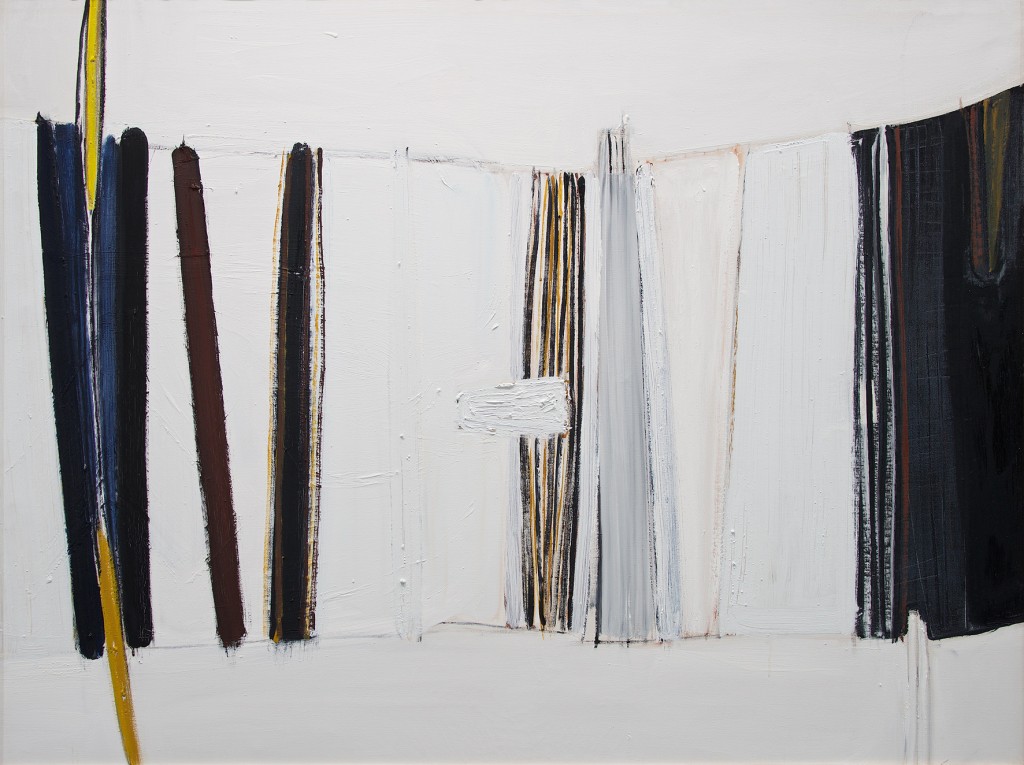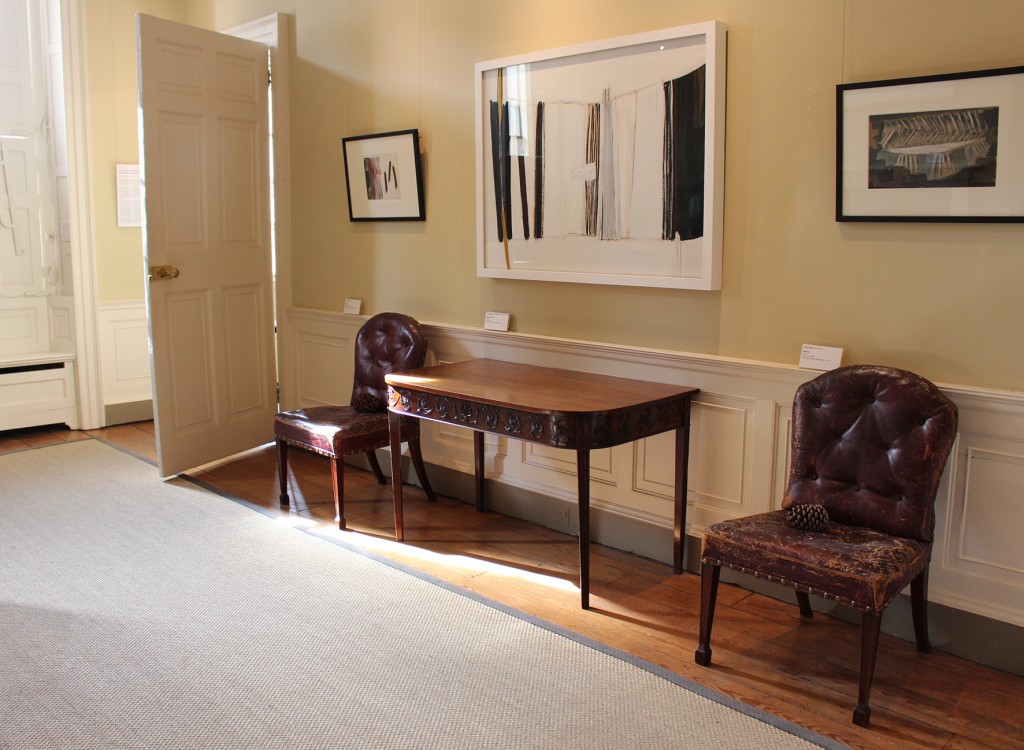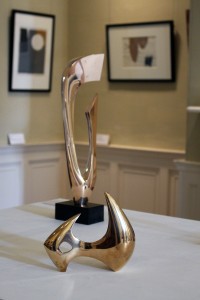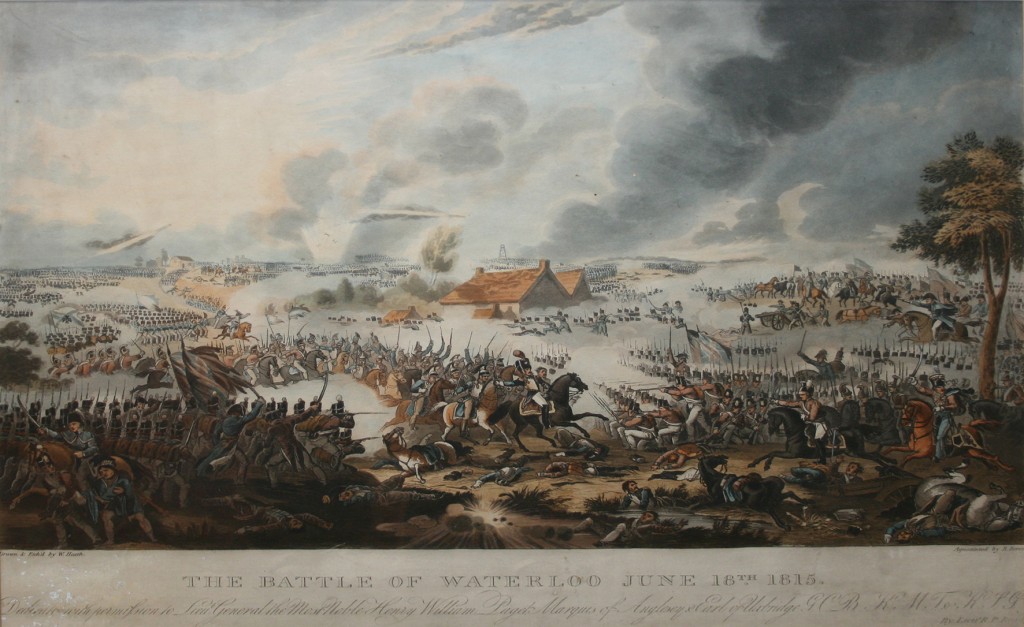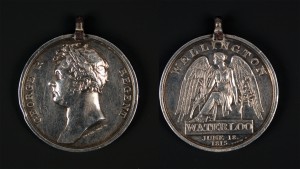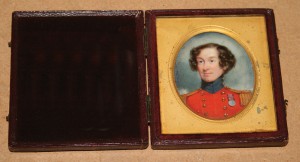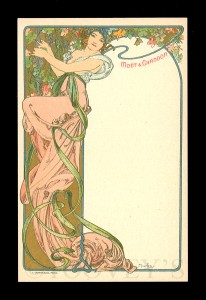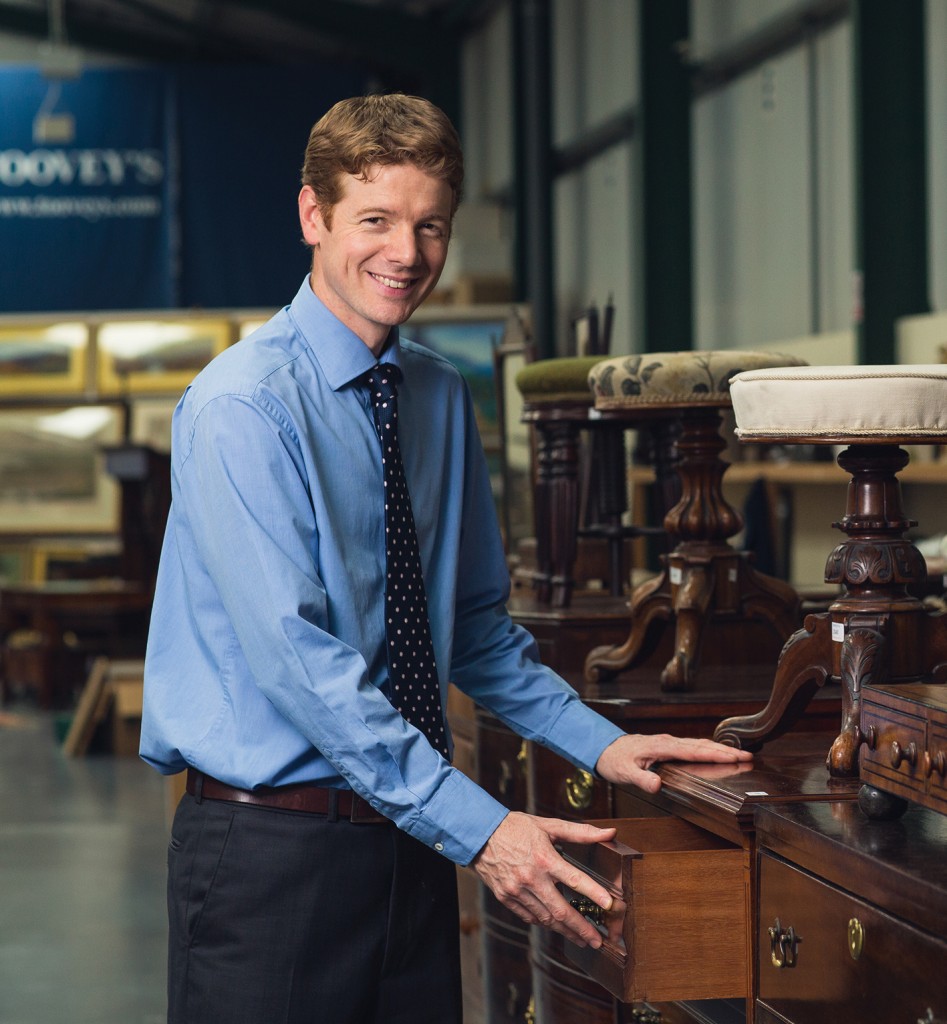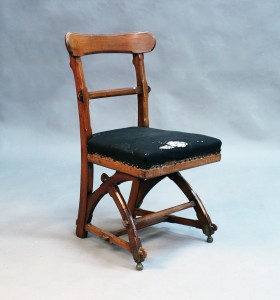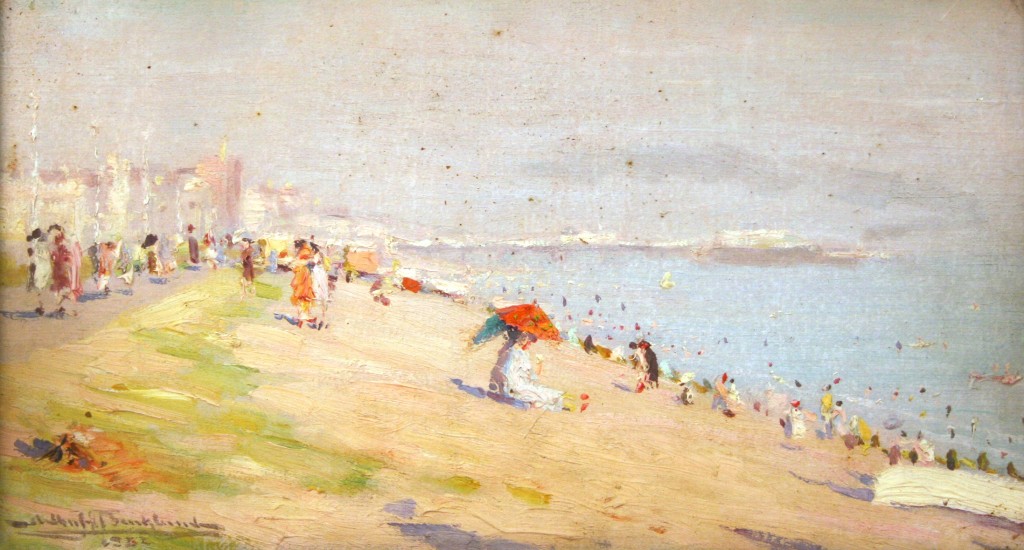
I really do like to be beside the seaside! The shingle beaches of the Sussex coast have delighted me since I was a small child. If ever life seems a bit hectic I only have to head to the seaside. Within a short while the whoosh and clatter of the waves breaking upon the pebbles and the salty wind stills me.
The famous seaside music hall song ‘I do like to be beside the seaside’ was written in 1907 by John A. Glover-Kind and made famous by the singer Mark Sheridan. In those same years, before the First World War, artistic activity in Britain was largely London based, though this did not prevent artists from venturing outside the city to paint.
The New English Art Club was started in 1886 to provide an exhibiting body for painters sympathetic to the artistic innovations emerging from France. By 1888 the Club had become factional. Amongst their subjects they painted the English seaside with a broken touch and increasingly brilliant colours influenced by French Impressionism. Alongside the art schools and galleries there were a number of circles which promoted work of a ‘modern’ nature. Amongst these were the Fitzroy Group and the related, but more famous, Camden Town Group. These two societies would eventually become known as the London Group. In the winter of 1913 and early 1914 they held an exhibition which was titled ‘English Post-Impressionists, Cubists and Others’.
Many followed in the footsteps of Post Impressionists like Lucien Pissarro, Anthony Devas, and Edward Le Bas in celebrating the coast of Sussex and her Downs. Their depictions of the Sussex landscape are not wholly representational, rather they allow us to see beyond our immediate perception of the world around us. As we glimpse the hidden rhythms and beauty in creation we come to understand something of our place in it.
Others, too, found a communion with the Sussex Landscape. Take for example the delightful oil shown above by the painter and illustrator, Arthur Herbert Buckland (1870–1927). In this summer scene people promenade and sit on the beach at Hove beneath their parasols. Brighton and her piers shimmer distantly in the heat and light. The handling of paint heightens the viewer’s sense of light and movement leaving room for the scene to come alive in our imaginations.
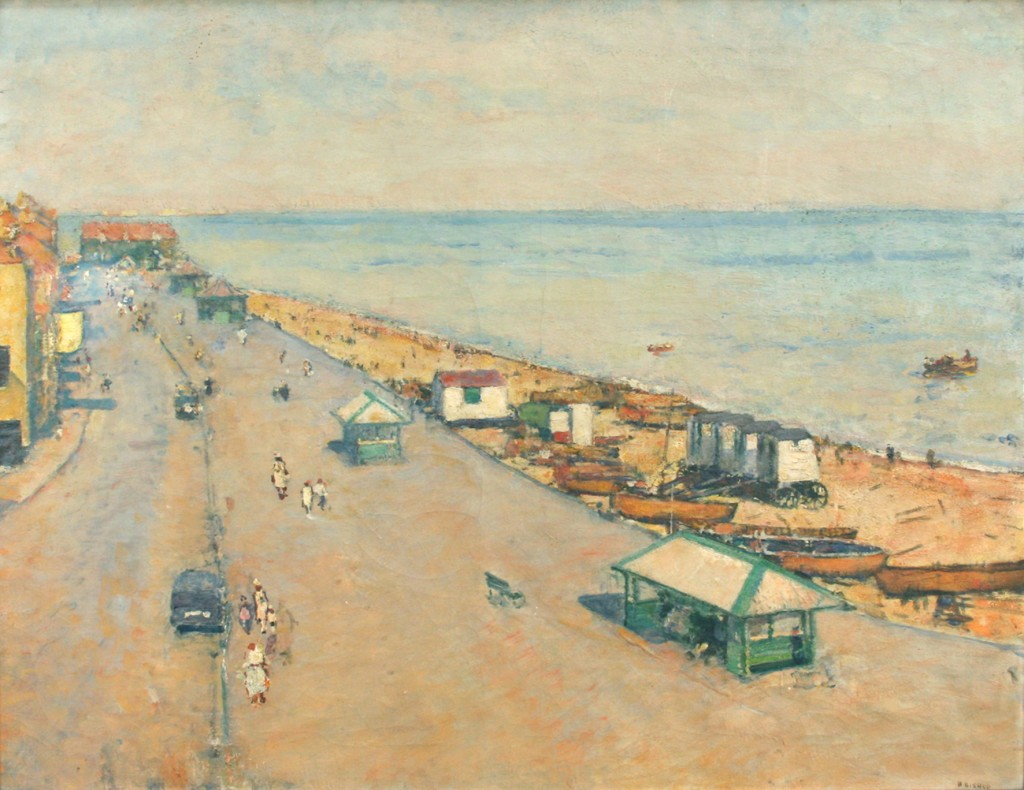
The oil on canvas by the artist Henry Bishop (1868-1939) is thought to depict the promenade and beach at Deal in Kent. Here once again the artist depicts that particular summer light which presents a paler palette to the eye. This is an early morning scene. A few cars are parked and figures walk past a row of bathing huts upon the beach. The air is still cool with the promise of a warm summer’s day ahead.
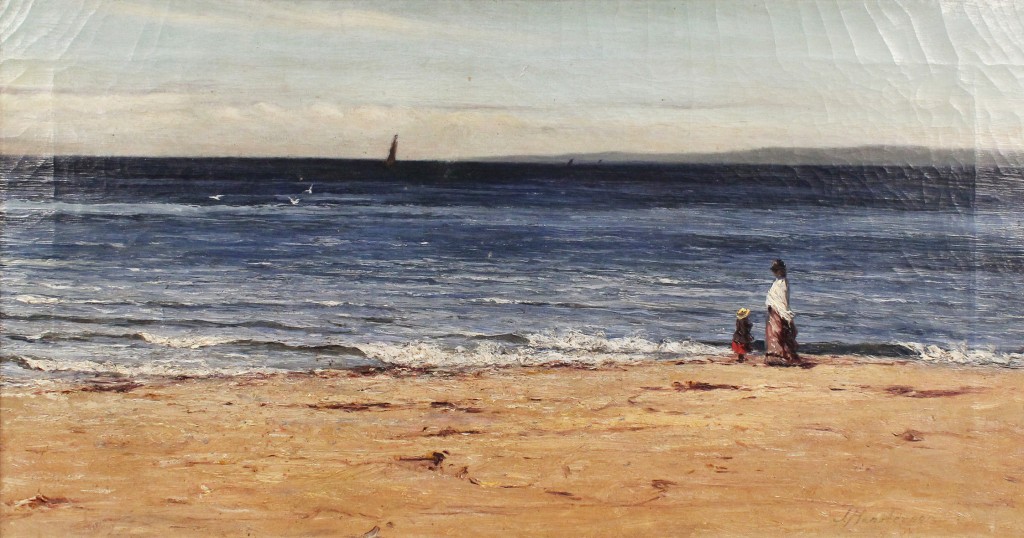
In the late 19th and early 20th centuries artists across the country painted Britain’s wonderful coastline and not just in the South-East. The Scottish artist Joseph Henderson (1832–1908) painted portraits, marine pictures, genre and coastal scenes. The cool light of his oil on canvas ‘Ayshire Coast’ is reflected in the blue of the sea. The two figures on the beach, together with the sail on the horizon once again draws us into the landscape and narrative of the scene.
In these paintings we see the continuing renaissance of the British Romantic Tradition, often articulated with a fresh voice. Prices at auction for oils by these artists range from middle hundreds to tens of thousands of pounds.
As I sit writing this the weather forecasters are predicting a heat wave this week! Perhaps these paintings will inspire you to revisit the Sussex coast. I hope that the whoosh and clatter of the waves breaking upon the pebbles and the salty breeze will bless you as they do me.
By Revd. Rupert Toovey. Originally published on 1st July 2015 in the West Sussex Gazette.
